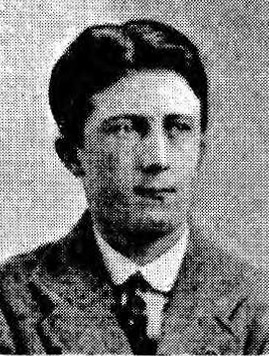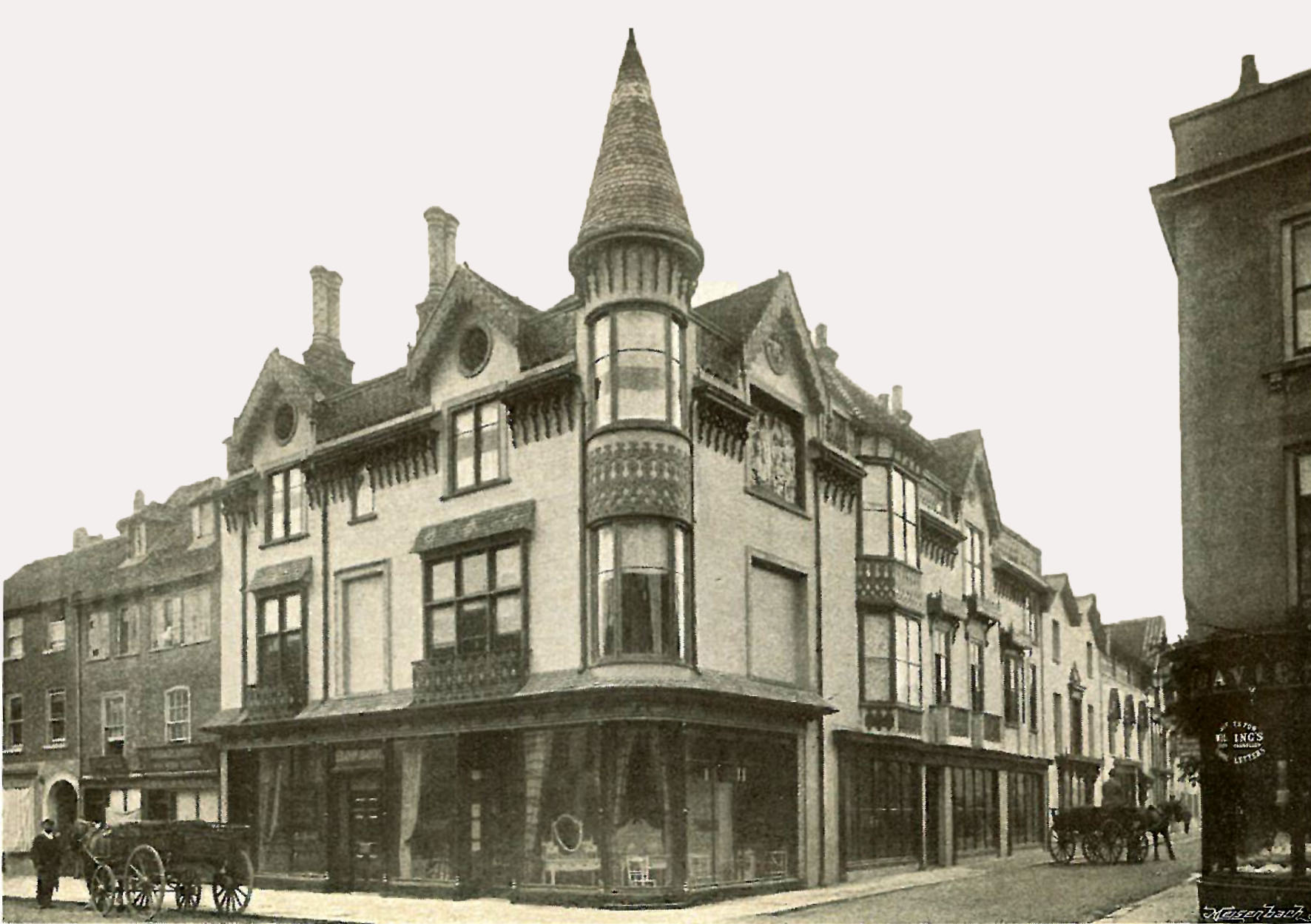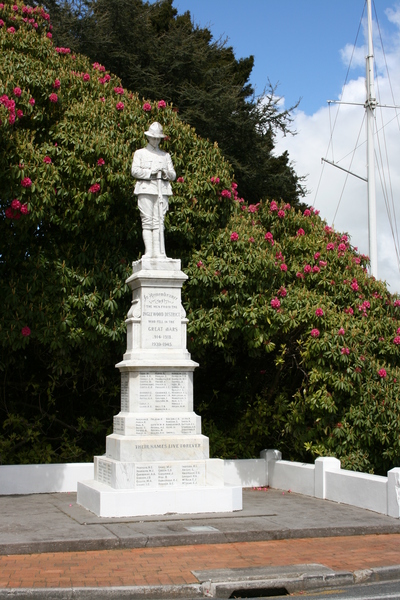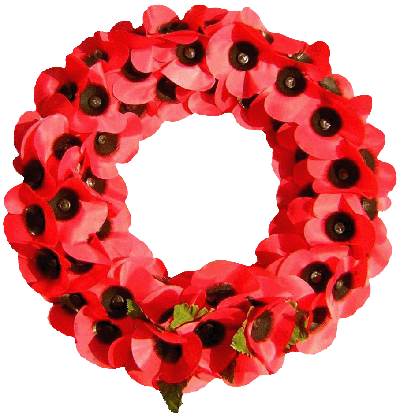Joseph Alfred Hopson
Trooper 11/774 Joseph Alfred Hopson, 2nd Squadron, Wellington Mounted Rifles

Joseph Frederick Hopson (De Ruvigny) |
Joseph, known as Seph, was born in Newbury on 7 August 1888 the eldest son of Joseph Herbert and his wife Edith Annie née Stradling. His father was a furniture dealer who built a grand store at 64 Northbrook Street, on the corner with West Street. His mother was the daughter of another notable Newbury trader, Alfred Stradling - a watchmaker and jeweller who brought his family to Newbury from High Wycombe. Edith’s brother Charles continued his father’s business, while their brother James started up as a cycle dealer and moved into motor cars, first as Stradling & Plenty and later on his own.
However it is the Hopson name that is better known - through the department store formed by the amalgamation of the Hopson furniture business with Alfred Camp’s Drapery Bazaar in 1921. The amalgamation was the result of the marriage of Seph’s brother, Paul to Alfred Camp’s daughter, Norah. Camp Hopson’s remained in the control of the family until 2014, and remains a notable high street presence in Newbury.
There was a third brother, Keith Stradling Hopson, who died aged only 18 in 1909. He was buried in a double plot in Newtown Road Cemetery, which already held his grandparents Alfred and Ann Stradling.
Seph was educated at Taunton School from 1901 to 1905. Often knowledge of school careers comes from sporting achievement (photographs of school teams seem to survive better than academic reports), but Seph did well enough academically to have left his mark, which is useful because he failed to make the school sports teams. In 1904 he won three school prizes: the Wills Prize for English, together with a Science prize and a Writing prize. In 1905, the year he left, he is recorded as being in the Upper 5th Classical form and gaining his Cambridge Junior Certificate.
From school he went to work at Messrs Evans & Owen of Bath on an apprenticeship or similar through which he would receive business training. All of this prepared him to enter the family business, which he had done by 1911 when he is listed in the census as an Upholsterer’s assistant. However, he tired of this life and took up farming at Longwood Warren near Winchester. During this period he also served in the local Territorial cavalry – the Berkshire Yeomanry.

Alfred Hopson's store on the corner of West Street and Northbrook Street. |
By 1914 he had determined upon another change, this time the radical one of emigration to New Zealand. He sailed on board the SS Benalla on 23 July bound for Sydney via Capetown, Adelaide and Melbourne; before he reached the first stop at Capetown the country was at war. It seems that Seph was keen to do his bit, but waited until he got to Sydney in October before attempting to enlist. Apparently he did not have with him any proof of his service with the Berkshire Yeomanry which, presumably, made it difficult to join a cavalry unit or, perhaps, justify a free passage home to join up with the Yeomanry. So he decided to wait until he got to New Zealand before making any further attempt to enlist.
It appears that he had chosen New Zealand as his destination because he had relatives there. When he eventually enlisted into the Wellington Mounted Rifles on 20 October 1914 he gave his address as Bristol Road, Inglewood and his employer as A Hopson – his father’s cousin, Arthur. He also decided to shave two years off his age and gave his date of birth as 7 August 1890 – it is not at all clear why a 26-year-old should choose to do this. He left New Zealand on a troop transport on 14 December and landed in Egypt on 2 February. The idea was to use Egypt as a training ground where the raw recruits would be transformed into a fighting force before moving on to France, while offering extra manpower for the defence of the Suez Canal if threatened.
However, plans changed. The Australian & New Zealand Corps (ANZAC), made up of men like Seph from both colonies, was conveniently placed when Churchill’s plan to capture Constantinople (Istanbul) via landings on the Gallipoli Peninsula was approved by the UK Government. Together with several British, Indian and French Army divisions, the ANZACs landed on the peninsula on 25 April 1915. On 12 May the ANZAC mounted troops were sent in as infantry, such was the shortage of men. Seph was not with his unit at this point as he had been hospitalised with a foot injury; he did not rejoin his unit until 23 August at ANZAC cove.
A few days later on 27 August, the remnants of the New Zealand Mounted Rifles (the combined force made up of the Wellington, Auckland, Otago and Canterbury Mounted Rifles) some 300 strong were chosen to lead a new assault on Kaiajik Aghala, better known as Hill 60. An earlier assault a few days earlier had some limited success, and it was decided that one more effort was justified.
New Zealanders at Gallipoli, Major Fred Waite, 1921
After a bombardment by our artillery, at 5pm our men jumped out to advance and were immediately under a terribly hot fire from machine guns and rifles. But they never wavered, and with men falling everywhere they continued in one long straight line, magnificent in their courage, on into the first trench where they disappeared for 10 or 15 minutes among a nest of live Turks. Finishing these off, without more hesitation, they rose again and advanced under the same withering fire, fewer in numbers but dauntless in determination, only to meet a new foe in the enemy’s shrapnel.
The casualties were fearful, but still they pressed on to the second trench, then the third. Men were falling more quickly now. Yet it was a charge to stir the heart and quicken the blood of a stoic, and so forlorn it looked against such dreadful odds. The little pink flanking flags were gradually moving forward as the artillery exploded their shells just in front of them. It was noticeable that the 4th Australian Infantry Brigade had not been able to make an advance on the right, and the troops on our left were making little headway. Our machine guns now hurried forward to take up a forward position and all hung on to the ground as darkness set in. Wounded, slightly and severely, now began to pour into the dressing stations.
It then became a bomb [grenade] duel for the remainder of the night. The trenches were choked with dead and wounded Turks and our own people, and were so narrow that no stretchers could be used to send them out.
During this mayhem Seph was killed. Three days later the chaplain of the 163th Brigade collected identity discs from a number of ‘much decomposed’ bodies, one of which bore Seph’s number - 11/774.
Even though it was only three days between his death and the discovery of his body, he was listed as missing in action – and the news was communicated to his family:
Newbury Weekly News 23 September 1915 p8 – Local War Notes
Official intimation has been received by Mr and Mrs Joseph H Hopson of Northbrook-street, that their son “Seph” is reported as missing. He was in the Berks Yeomanry before leaving England for New Zealand and arrived in that Colony soon after the outbreak of war. He immediately volunteered his services and joined the 2nd Wellington Mounted Rifles, in which he was a sergeant. He went with the Expeditionary Force to Egypt, and whilst there looked up some of his old friends in the Berks Yeomanry. The New Zealand force was transferred to the Gallipoli peninsula, where the Colonials have taken part in much fierce fighting.
The following week the sad news of his death was reported:
Newbury Weekly News 28 October 1915 p8 – Local War Notes
Official confirmation has been received by Mr and Mrs Joseph Herbert Hopson, of Newbury, of the death of their son, Trooper Joseph Alfred Hopson, of the Wellington Mounted Rifles, New Zealand Expeditionary Force. He had been reported missing for some time and the worst was feared. On Thursday, a telegram was received from the London Record Office of the New Zealand Force, followed by a letter from the same source, stating that Trooper Hopson was killed in action on August 27th. Greater details were furnished in a sympathetic letter received from Corpl J M Morrison, who described himself as his closest friend since he joined the squadron in New Zealand. Trooper Hopson had been detained at the base by an injured foot, but rejoined his regiment when it was engaged in outpost work in Gallipoli. On August 24th they had orders to shift about a mile to the left, where a few lines of trenches had to be taken. The NZ brigade formed the first and second lines of attack, and after a severe two hours’ bombardment, they charged the first trenches, through an inferno of shrapnel, machine gun, and rifle fire. A fair percentage of the New Zealanders reached the trenches, and after a hand-to-hand fight, took possession of those lines.
It was in this fight that Trooper Hopson fell. His friend writes: “Please accept my deepest sympathy in your loss, although I consider the loss to us is greater. I have lost a comrade and the squadron has lost one of its best soldiers, one who was loved and respected, and is mourned by the very few of us now left. There are only 70 out of 700, the remainder being killed, wounded, or on sick leave. I trust that you will bear in mind that Joe has nobly laid down his life for King and country, surely the finest death to die.” Like many other British lads, he lies buried in a foreign soil, but there will always be kindly memories retained by his Newbury friends. To the parents sincere sympathy is extended.
An alternative extract from Corporal Morrison’s letter was submitted as a part of Seph’s entry in De Ruvigny’s Roll of Honour (p172): “After a severe two hours’ bombardment our men charged the first trenches, only a matter of a couple of hundred yards, but, through an inferno of shrapnel, machine-gun and rifle fire, a fair percentage of our men reached the trenches, and after a hand-to-hand fight, took possession of three lines of trenches; but owing partly to the inexperience of the supports we lost one line during the night. This we regained the following night, and after two days’ hard fighting with rifles and bombs, the newly-acquired trenches were safe enough to enable them to withdraw our men. Our regiment lost 17 killed, 34 missing, and 70 odd wounded. Please accept my deepest sympathy in your loss, although I consider the loss to us greater. I have lost a comrade, and the squadron has lost one of its best soldiers, one who was loved and respected and is mourned by the very few of us left.”
The unknown chaplain’s action in removing the identity tag from Seph’s body meant that his remains would not have been identifiable if or when they were buried. Venturing into the dangers of no-man’s land could only be done in the dark, rendering it impossible to read and note the information from ID tags; the only sane method of gathering identification information was to take the deceased’s ID tags. It was also far better to confirm death as soon as practical than leave relatives in limbo for months waiting for news of a missing loved one. It was not until May 1916 that a second ID tag was issued – so that one could be left with the body for later identification purposes and one could be removed as proof of death.

Joseph's name on Newbury War Memorial (mid right) |
His name is remembered on the Hill 60 (New Zealand) Memorial to the Missing erected among the old trenches close to where he died.
Locally he is remembered on tablet 4 of the Newbury Town War Memorial and also on the memorial board and roll of honour in St Nicolas’ Church, Newbury. Surprisingly he is remembered on these memorials in the Church of England parish church rather than the memorial in the Congregational Church - with which his father had very strong ties. His name was also appended to those of his grandparents (Alfred and Ann Stradling) and brother, Keith, on their grave in Newtown Road Cemetery.

Inglewood War Memorial |
Paul Hopson, full name Geoffrey Paul, was Joseph and Edith Hopson’s only surviving child after Seph’s death in 1915. He served as Private MT/148967 in the Army Service Corps (ASC) during the war, including service overseas – the MT indicates service in one of the ASC’s Mechanical Transport companies, but no more is known of his time in uniform. As he was a resident of Cold Ash his name appears on a Roll of Honour in St Mark's Church listing parishioners who served in the armed forces during the Great War.
After the war he came home to Newbury, married Norah (Winifred Norah) Camp and eventually became Managing Director of Camp Hopson.
Thanks to John Brown at Taunton School for the details of Seph’s school career and to Dick Flory for scanning Seph's photograph from his copy of De Ruvigny's Roll of Honour.
.
Bibliography
New Zealanders at Gallipoli, Major Fred Waite, 1921 – read it here.

Find a memorial :
| Died this day: | |
| 29 November 1918 | |
| C Talmage | |
| Newbury |

Like this site? Show your appreciation through a donation to a great charity.